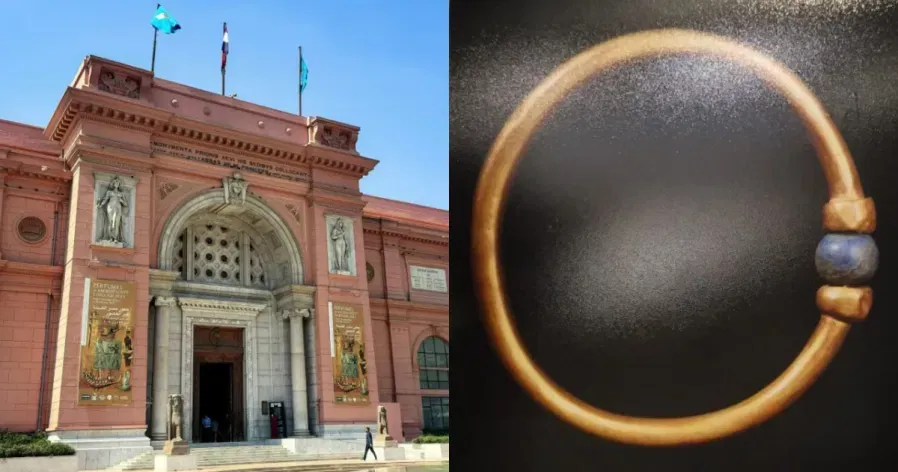Ancient Egyptian Pharaoh's 3,000-Year-Old Gold Bracelet Stolen and Melted Down
The 3,000-year-old gold bracelet of Pharaoh Amenemope was stolen from the Egyptian Museum, melted down, and lost forever, sparking urgent questions on artifact security.

A Heartbreaking Loss of Ancient Heritage
Imagine losing a priceless treasure that has survived millennia only to have it vanish in a blink. This is the harsh reality that the Egyptian Ministry of Tourism and Antiquities has had to face after the shocking theft and destruction of a 3,000-year-old gold bracelet. This ancient artifact, once belonging to Pharaoh Amenemope from the 12th Dynasty, symbolized royal authority with its golden band and stunning spherical lapis lazuli beads. It was not just a piece of jewelry but a living link to Egypt's magnificent past.
Resting safely in the Egyptian Museum's restoration laboratory and scheduled for a major exhibition, the bracelet's disappearance on September 9th sent ripples of concern across the global cultural heritage community. Only to later be recovered melted into scrap gold, it serves as a chilling reminder of the vulnerabilities that even the most treasured relics face today.
The Investigation: Betrayal from Within
What makes this episode even more troubling is how the theft transpired. The culprit was not an outside thief, but a restoration expert trusted with the artifact’s care. This insider betrayal uncovered a dark network involving jewelers and a smelting plant where the bracelet was ultimately destroyed.
Once the bracelet was sold to a silver merchant, it passed through several hands before being irreversibly melted down—meaning this priceless piece of history cannot be restored. The Ministry of Interior quickly apprehended the suspect along with three accomplices, all of whom pleaded guilty. The proceeds from this sad crime amounted to approximately 194,000 Egyptian pounds, a pittance compared to the cultural loss inflicted.
Why This Loss Matters Beyond Its Monetary Value
On the surface, the crime might look like a mere theft for quick financial gain, but the wider implications are far graver. The bracelet was not just gold and beads—it held immense academic and historical significance. As noted by French antiquities scholar Peltier, it was unearthed alongside Pharaoh Amenemope’s golden mask in the 1940s at the royal tombs in Tanis. Its destruction erases irreplaceable evidence of Egypt’s glorious Pharaonic heritage.
This incident raises urgent questions about the adequacy of security measures at museums and restoration labs worldwide. How many other treasures are at risk of such internal betrayals? It also shines a light on the larger problem of antiquities smuggling and illegal artifact trade that continues to endanger the heritage of nations.
Moving Forward: Protecting Our Shared History
Egyptian authorities have responded swiftly by issuing alerts at all transport hubs and launching tighter surveillance protocols. However, solutions must go beyond stricter controls—they require a collective commitment to respect and safeguard cultural heritage globally. Public awareness, international cooperation, and robust legal frameworks are essential to prevent similar tragedies.
As we grieve the loss of the Pharaoh's golden bracelet, let it remind us that these artifacts are not mere objects, but treasures telling humanity's story. Protecting them is protecting our identity, history, and legacy for future generations.
💔✨




